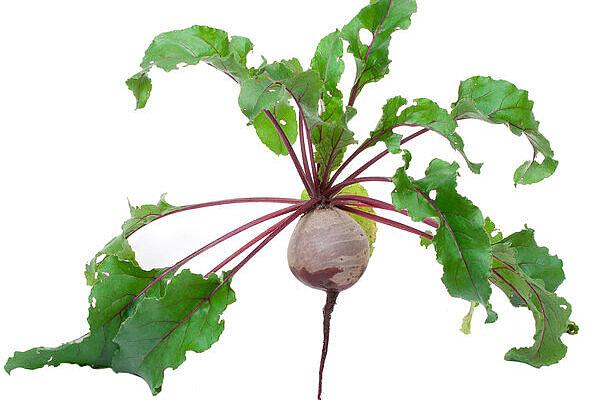Fodder beet

The fodder beet is a type of turnip, also known as swede or swede. It belongs to the cruciferous family and has a yellowish to white skin and yellow to orange flesh. Turnips are often used as animal feed, but are they also suitable for dogs?
Benefits of fodder beet for dogs
Beetroot has a number of benefits for dogs that make it a good nutritional supplement. For example
- Beets are rich in fiber, which can aid digestion and increase satiety.
- Fodder beets are rich in vitamins and minerals such as vitamin C, potassium, calcium and magnesium, which can support the immune system and metabolism.
- Beetroot has a low glycemic index, which means that it does not cause a sharp rise in blood sugar levels. This can be beneficial for dogs with diabetes or obesity.
Disadvantages of fodder beet for dogs
However, carrots also have some disadvantages for dogs that should be taken into account. For example
- Beetroot is rich in oxalates, which can be problematic for dogs that are prone to bladder or kidney stones. Oxalates can build up in the urine and form crystals that are painful and can lead to infections.
- Beets are an acidic food that can cause bloating or diarrhea in some dogs. This is due to the fact that acidic foods can alter the pH of the stomach and disrupt the intestinal flora.
- Raw beets can cause thyroid problems. This is because raw beets contain goitrogenic substances that can inhibit iodine absorption. Iodine is important for the formation of thyroid hormones.
How do I feed beetroot to dogs?
If you want to give your dog fodder beet, you should follow a few tips:
- Only ever give your dog a small amount of fodder beet as a side dish or snack. Your dog's main diet should consist of high-quality dry or wet food.
- Always cook the fodder beet thoroughly before feeding it to your dog. This reduces the content of oxalates and goitrogenic substances and improves digestibility.
- Cut the fodder beet into small pieces or puree it. This avoids the risk of choking or intestinal obstruction due to large pieces.
Alternatives to turnips for dogs
If you want to give your dog some variety or if he doesn't like or can't tolerate fodder beet, there are some alternatives to this vegetable. For example
Beetroot can be a healthy addition to a dog's diet when fed in moderation and cooked. It contains a lot of fiber, vitamins and minerals that can be good for your dog. However, you should be aware of possible side effects such as oxalate stones, gastrointestinal problems or thyroid problems.
If you notice any signs of hypersensitivity or poisoning in your dog, you should see your vet immediately. We are not a substitute for a vet, but we try to be as accurate as possible. Every dog reacts differently and we recommend you get a second opinion or consult your vet if in doubt.
Stay healthy and take good care of your four-legged friend!😊
Similar to Fodder beet
Carrots are root vegetables that belong to the umbellifer family. They have an orange color, which comes from the plant pigment beta-carotene. This is converted in the body into vitamin A, which is...
The pumpkin belongs to the gourd family (Cucurbitaceae) and originally comes from America. There are over 800 different pumpkin varieties, which differ in shape, color, size and taste. Most pumpkins...
Zucchinis are a form of garden pumpkin that originally comes from Central America. Its name comes from the Italian and means "small pumpkin". Zucchinis have an elongated shape and a green or yellow...
Beet fiber is a by-product of sugar production from sugar beet. The sugar beet is crushed, boiled and pressed to extract the sugar. The remaining fibers are called beet fibers. They are almost free...



